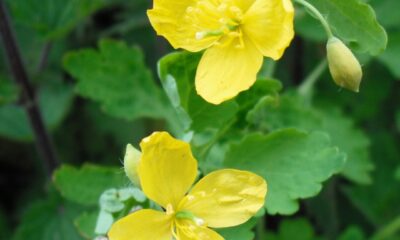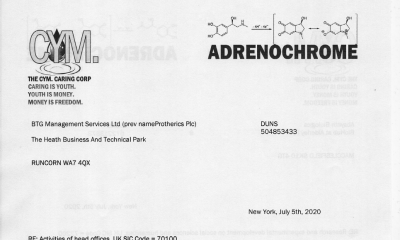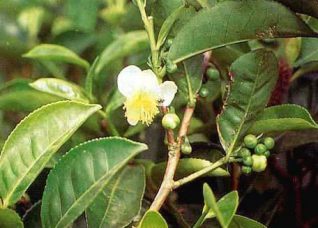Published online 2020 Jun 12
doi: 10.3390/molecules25122735
Syed Amir Ashraf,1 Abd Elmoneim O. Elkhalifa,1 Arif Jamal Siddiqui,2 Mitesh Patel,3 Amir Mahgoub Awadelkareem,1 Mejdi Snoussi,2,4 Mohammad Saquib Ashraf,5 Mohd Adnan,2,* and Sibte Hadi6,*
Simona Fabroni, Academic Editor, Krystian Marszałek, Academic Editor, and Aldo Todaro, Academic Editor
Abstract
Cordyceps is a rare naturally occurring entomopathogenic fungus usually found at high altitudes on the Himalayan plateau and a well-known medicinal mushroom in traditional Chinese medicine. Cordyceps contains various bioactive components, out of which, cordycepin is considered most vital, due to its utmost therapeutic as well as nutraceutical potential. Moreover, the structure similarity of cordycepin with adenosine makes it an important bioactive component, with difference of only hydroxyl group, lacking in the 3′ position of its ribose moiety. Cordycepin is known for various nutraceutical and therapeutic potential, such as anti-diabetic, anti-hyperlipidemia, anti-fungal, anti-inflammatory, immunomodulatory, antioxidant, anti-aging, anticancer, antiviral, hepato-protective, hypo-sexuality, cardiovascular diseases, antimalarial, anti-osteoporotic, anti-arthritic, cosmeceutical etc. which makes it a most valuable medicinal mushroom for helping in maintaining good health. In this review, effort has been made to bring altogether the possible wide range of cordycepin’s nutraceutical potential along with its pharmacological actions and possible mechanism. Additionally, it also summarizes the details of cordycepin based nutraceuticals predominantly available in the market with expected global value. Moreover, this review will attract the attention of food scientists, nutritionists, pharmaceutical and food industries to improve the use of bioactive molecule cordycepin for nutraceutical purposes with commercialization to aid and promote healthy lifestyle, wellness and wellbeing.
Keywords: Cordyceps, cordycepin, medicinal mushroom, nutraceutical, anti-diabetic, immunomodulator, anti-hyperlipidemia, Chinese medicine, DongChongXiaCao, bioactive compound
1. Introduction
Cordyceps, derived from two Latin words “cord” and “ceps” representing ‘club’ and ‘head’ respectively, describing it as club fungi. It is an entomopathogenic fungus where extensions of the stroma and fruiting body arise from insect larvae carcasses [1]. Cordyceps predominantly lives on the head of larvae of a particular moth species, Hepialus armoricanus Oberthur (Lepidoptera). It belongs to the Ascomycetes family and has been a very well-known fungus in Chinese traditional medicine for the last 300 years. Cordyceps is also known as ‘Dong Chong Xia Cao’, which means ‘Worm in winter and grass in summer’ in China [2,3,4]. According to the previous reports, around 1200 types of entomopathogenic fungi are known, out of which, Cordyceps is considered as one of the largest genus containing approximately 500 species. Several species of Cordyceps have been cultivated for their therapeutic properties such as Cordyceps sinensis, Cordyceps sobolifera, Cordyceps cicadicola, Cordyceps liangshanesis, Cordyceps ophioglossoides and Cordyceps militaris [5]. On the other hand, keeping in mind the therapeutic value, its major distribution location at approximately 14,000 ft altitude in the Himalayan regions of China, Nepal, Tibet and India makes it very expensive at around USD ($) 12,000 kg−1 [3,6,7]. Moreover, despite the harvesting difficulties and distribution, it is still considered a highly valued mushroom because of its abundant natural bioactive component resources with various potent biological activities and nutraceutical importance [2]. For hundreds of years, Cordyceps were used as a folk tonic food, but only in recent times, its potential pharmaceutical as well as nutraceutical application have been explored, which has attracted food scientists globally [8].
Currently, it has been observed that a majority of the population from developed as well as developing countries are suffering from chronic diseases, and the underlying causes are believed to be rapid urbanization and changes in eating and lifestyle behavior. Among the various underline causes, eating habits are considered one of the major risk factors for chronic diseases, such as obesity, diabetes, hypertension, hyperlipidemia and many more affecting both wellness and the wellbeing of mankind [9,10]. Therefore, the scientific community is working relentlessly to develop naturally occurring or naturally derived product, such as nutraceuticals, which could help in improving the human health status while not possessing harmful effects. Cordyceps are among the thousands of mushroom available containing various bioactive components with innumerable health benefits [11]. It has been used for its therapeutic values since long time and new promising features of cordycepin-based nutraceuticals are an advantage for the current population. There is a very well-known quote from Hippocrates stating that, “Let food be thy medicine and medicine be thy food”, describing the importance of nutrition for the prevention, treatment and management of diseases. Therefore, Cordyceps, as an edible mushroom, could be an ideal nutraceutical containing both nutritionally bioactive components as well as a source of various physiological benefits [12,13]. Moreover, based on our literature search, we found that researchers have majorly discussed cordycepin for its anticancer potential, but other therapeutic applications and potential nutraceutical approaches have either not been discussed in detail or ignored. The main objective of this review is to focus on the nutraceutical potential of cordycepin (the major bioactive component of Cordyceps), using a mechanistic approach to study its pharmacological functions as well as to demonstrate the benefit of commercial availability of cordycepin-based nutraceuticals.
References:
https://www.ncbi.nlm.nih.gov/pmc/articles/PMC7356751/


 Alternative Health2 years ago
Alternative Health2 years ago
 Life Force Network2 years ago
Life Force Network2 years ago
 Alternative Health1 year ago
Alternative Health1 year ago
 Life Force Network2 years ago
Life Force Network2 years ago
 Alternative Health2 years ago
Alternative Health2 years ago
 Military2 years ago
Military2 years ago

















